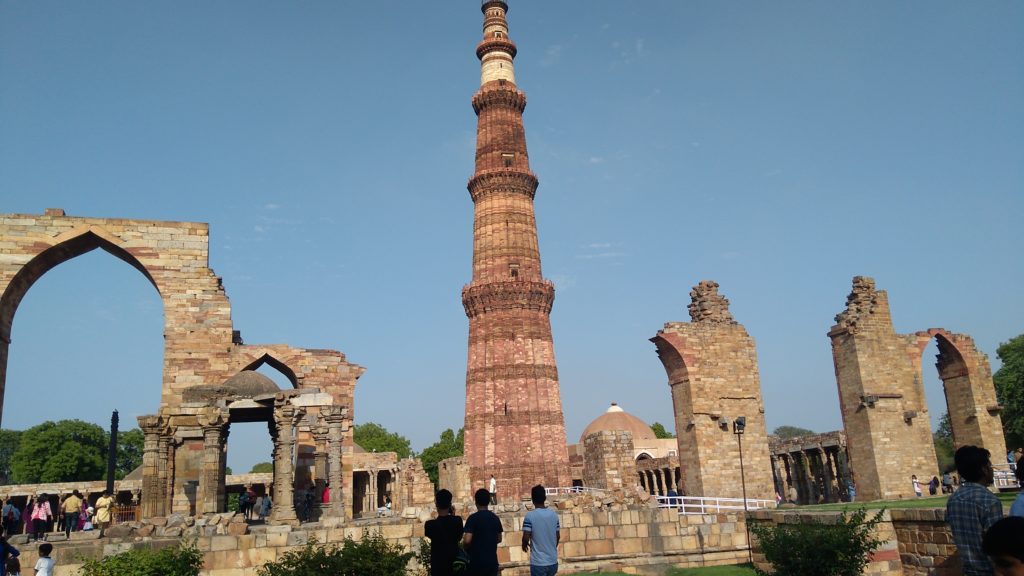Qutub Minar (Delhi) UNESCO World Heritage Site in the Mehraul New Delhi
Qutub Minar also spelled as Kutub Minar or Qutb Minar and Qutab Minar, is the tallest minaret in India. This monument is listed as a UNESCO World Heritage Site. The Qutub Minar is one of the finest monuments located in Delhi. The monument is made of red sandstone and marble. The Qutub Minar has 379 stairs and its heights reaches 72.5 meters (237.8 ft). The base diameter of Qutub Minar 14.3 metres, which eventually comes down to 2.7 metres at the last storey. The construction of this world heritage site in India was initiated by Qutub-ud-din Aibak and was completed by Iltutmish. The monument is surrounded by numerous other old structures and ruins and all of them are collectively called as the Qutub complex.

Some of the most significant monuments in the complex are:
- The Quwwat-ul-Islam Mosque, was made by Qutbu’d-Din Aibak in AD 1198. It is one of the first mosque built by the Delhi Sultans.
- The Iron Pillar is also located in the courtyard of the complex. The pillar has inscriptions in Sanskrit in Brahmi script which date back to the 4th century AD. According to local beliefs anyone who can but their arms around the pillar while have their back at pillar will have their wish granted.
The Qutub Minar in Delhi was built on the ruins of the Lal Kot, in the city of Dhillika, the capital city of the Tomars and the Chauhans who were the last Hindu rulers of Delhi. The monument was used as a watchtower and was named after the first Turkic sultan Qutub-ud-din Aibak.
Over the years Qutub Minar has suffered much damaged due to earthquakes and lightning strikes. This monument has been regularly repaired and renovated by several rulers. During the reign of King Firoz Shah, the monuments two top storeys were severely damaged due to lightning but the floors were successfully repaired by Firoz Shah. In 1505, an earthquake struck the minars and it was again repaired by Sikandar Lodi. Later in the year 1794, the minar suffered another blow from an massive earthquake this time Major Smith, an engineer, tried to repair the monument.
The Minar is tilted just over 60 cm from the vertical, a limit which is considered to be safe limits. Many experts hold the view that the Qutub Minar should be regularly monitored as over the years rainwater seepage has significantly weakened the foundation of this beautiful structure. Till 1981, all visitors could climb the staircase and reach to the top of Qutub Minar but following an accident on 4 December 1981 in which 45 people were killed in the stampede due to electricity failure, public access inside the minar is forbidden. The Qutub Minar in Delhi is open on all days from 6am to 6 pm.
Additional information about Qutub Minar
Location: Mehrauli
Nearest Metro Station: Qutub Minar Metro Station (Yellow Line)
Entry Fee: Rs. 30 for Indians and Rs. 500 for foreigners